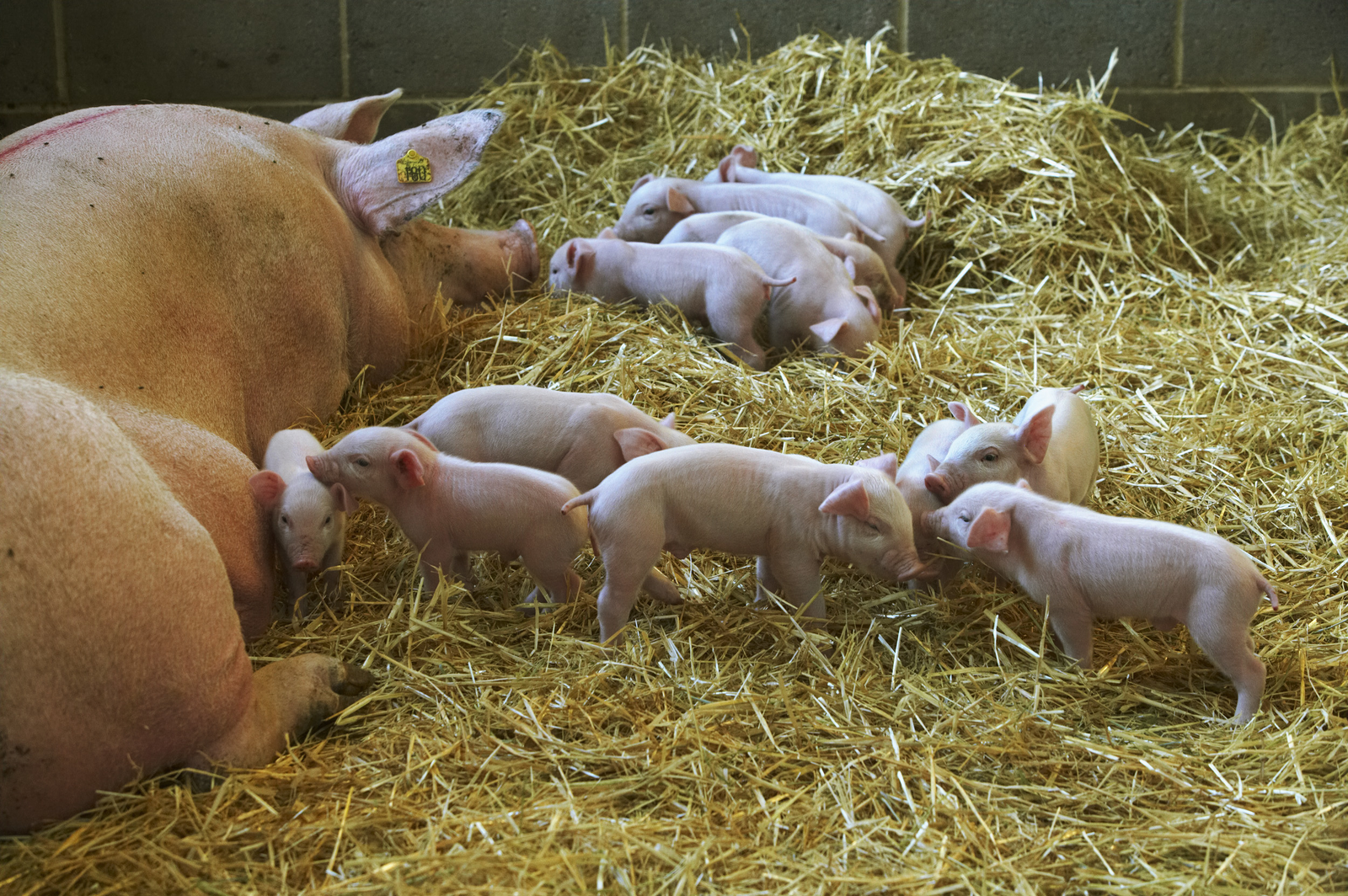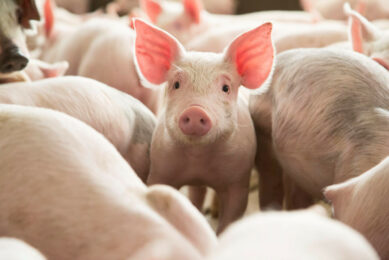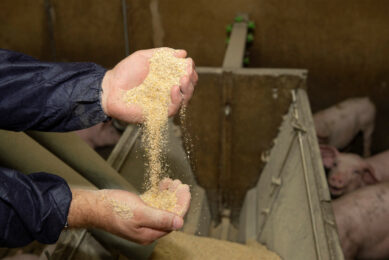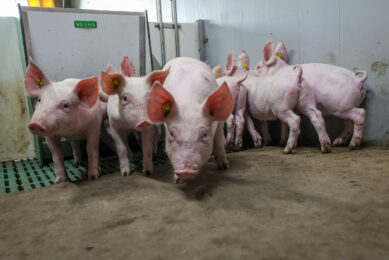Smart and flexible dosing of phytase for pigs

While the benefits of phytase are clear, calculating its true value for pig producers is not quite as simple. For this reason, a smart and flexible dosing approach should be considered for pigs. By understanding the physiological changes in the animal at different stages of its life cycle, the optimal level of phytase can be recommended to maximise value.
Phytase breaks down the anti-nutrient phytate to release phosphorus and other key nutrients such as calcium, energy and amino acids. Axtra PHY, a new bacterial phytase, developed by Danisco Animal Nutrition, is sourced from a Buttiauxella species bacterium. This phytase has shown superior bio-efficacy compared to other phytases. It is active at a lower pH where phytate is soluble and phytase can access phytate more efficiently while suiting the conditions of the pig’s stomach (pH 2-4). This means it can start breaking down phytate more quickly and completely to reduce the effects of phytate’s anti-nutritional factors. Pig producers today are using this fast-acting phytase successfully to increase nutrient availability, reduce inorganic phosphorus use and drive positive net benefits per pig.
The importance of life stage-specific dosing
In recent times, using high levels of phytase has become popular, with the belief that more is always better. Today this concept is being reconsidered and substituted with an approach that customises the dose levels to maximise the economic benefits at each life stage of the animal. There are physiological differences in pigs of different ages that must be considered when recommending phytase inclusion. Coupled with the fact that phosphorus requirements change over time, it is extremely important to have the correct dose. The type of diet and production system used can also influence the effects of phytase. And the presence of high levels of inorganic phosphorus, calcium and zinc, are examples of factors that negatively affect phytase efficacy.
Piglets
Young piglets are sensitive to phytate because of their short digestive transit time and immature digestive system. In particular, they have lower levels of endogenous enzymes as well as hydrochloric acid (HCL) excretion. High levels of phytate also affect sodium digestion, reducing the absorption of nutrients such as amino acids; via the sodium:potassium pump.
For these reasons a high dose (1000 to 2000 FTU/kg) of phytase in young pig diets is recommended to increase nutrient availability and significantly improve growth and performance. In addition to meeting phosphorus requirements, digestion is optimised. These benefits were demonstrated in a meta-analysis of trials where piglets were fed diets containing increasing doses of Buttiauxella phytase. Both bodyweight (Figure 1) and FCR were significantly improved by the two highest doses, compared to a negative control (NC). These performance benefits enhance the producer’s bottom line, giving a net benefit versus the positive control (PC) of €0.31 and €0.56 per pig respectively.
Figure 1 – Improved performance in piglets (10-20 kg) fed mixed diets over 14 days across 5 trials.

Growers
In grower pigs, the digestive system is maturing and they are less sensitive to phytate. In the same way that nutrient requirements are reduced and more by-products are used at this life stage, it makes physiological sense to lower the inclusion level of phytase (750 to 1000 FTU/kg) as well. These factors continue into the finisher period and the recommended dose can be further reduced to 500 FTU/kg. Commercial trials confirmed the benefits of using 1000 FTU/kg in grower pigs. The results show that at 500 FTU/kg inclusion, phosphorus requirements are being met, yet at 1000 FTU/kg there are significant improvements in FCR (Figure 2), feed intake and bodyweight compared to NC. At 1000 FTU/kg, extra phosphoric effects improve performance, amino acid availability and increase utilisation, giving benefits over and above what is expected for the additional phosphorus release. In terms of savings, this means an additional € 0.60 per pig versus the positive control.
Figure 2 – Performance benefits in grower pigs (34-55 kg) across 7 trials.

Sows
During lactation, sows enter a period of negative energy balance, where the amount of energy required for lactation is greater than the amount she can consume. The result is the use of body reserves and subsequently weight loss. It is important to prevent any potential drop in milk production, which in turn lowers piglet weaning weights. If a sow loses weight over several parities, it can affect her long-term reproductive health, the time taken to return to service increases and her longevity in the herd reduces. By including phytase, the energy availability of the diet is improved, leaving more for lactation.
Including a high dose of phytase in sow diets (1000 to 2000 FTU/kg) is supported by a series of studies. When lactating sows were fed diets containing Buttiauxella phytase; at four different doses, bodyweight losses were maintained at the level of the PC. Yet at the highest two dose levels the bodyweight loss is significantly reduced versus the NC (Figure 3). Therefore, by investing in phytase inclusion during lactation, both sow longevity and weaning weights are protected.
Figure 3 – Bodyweight loss management in lactating sows (parities 2-4) across 6 trials.

An evidence-based approach
Just as nutritionists use premium quality, highly digestible ingredients in diets for young pigs, a high dose of a fast-acting phytase should be used to support their immature digestive systems. As pigs grow and have lower phosphorous requirements, the evidence supports a slightly lower dose. Yet inclusion of this specific phytase at the recommended dose for the different life stages, does offer extra phosphorus effects, maximising performance and profitability. Finally, maintaining sow bodyweight is a concern for producers and using the product at the recommended higher dose can help to prevent the long-term effects of bodyweight losses, and support the overall sustainability of the animal production cycle.
The levels recommended have been derived from a deep understanding of what is happening in pigs at different life stages; taking into account the production challenges at each. These levels are backed up by extensive trials carried out in a range of systems and can be adapted by feed formulators to allow greater flexibility in ingredient use and optimise pig production.












